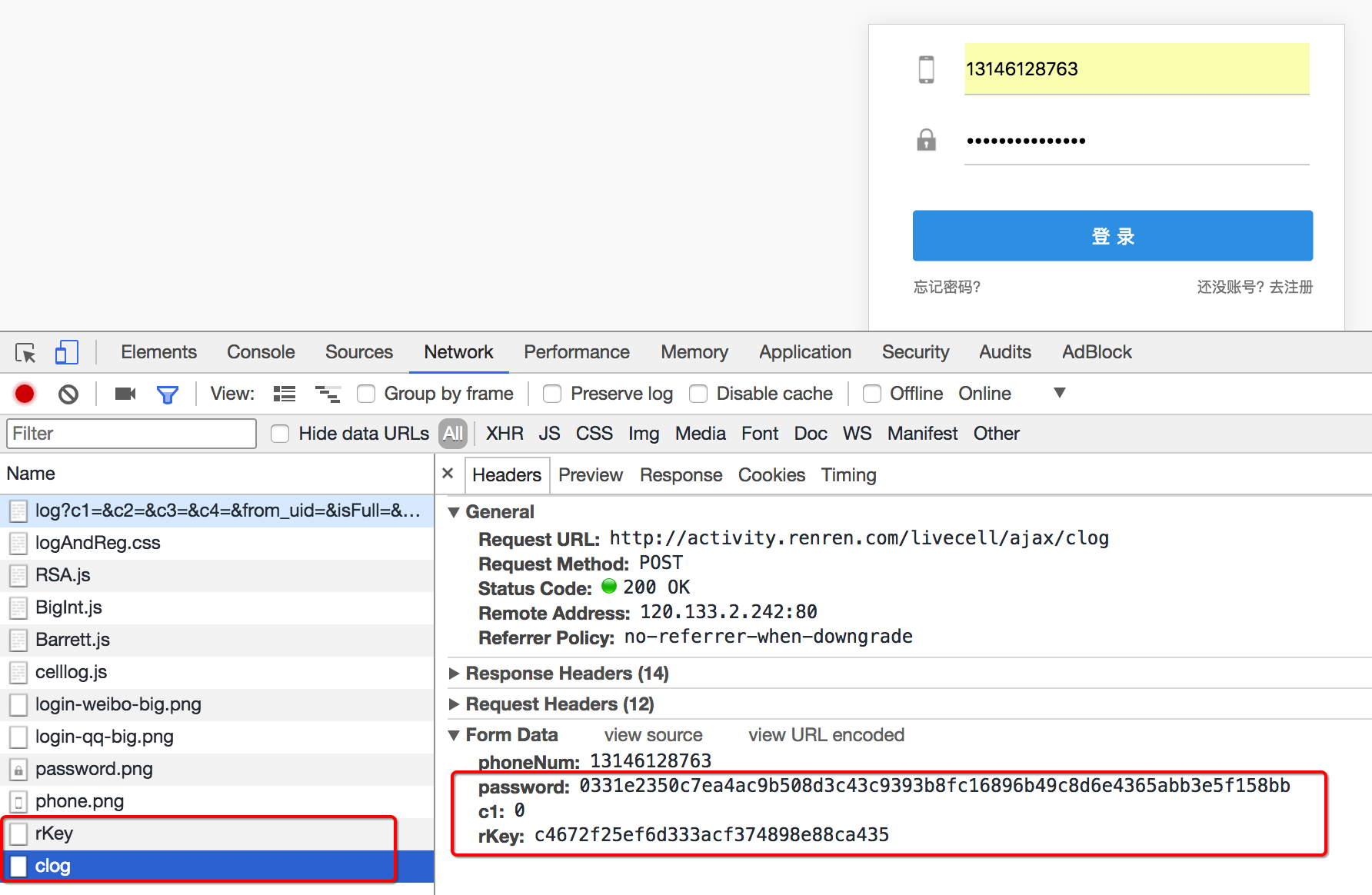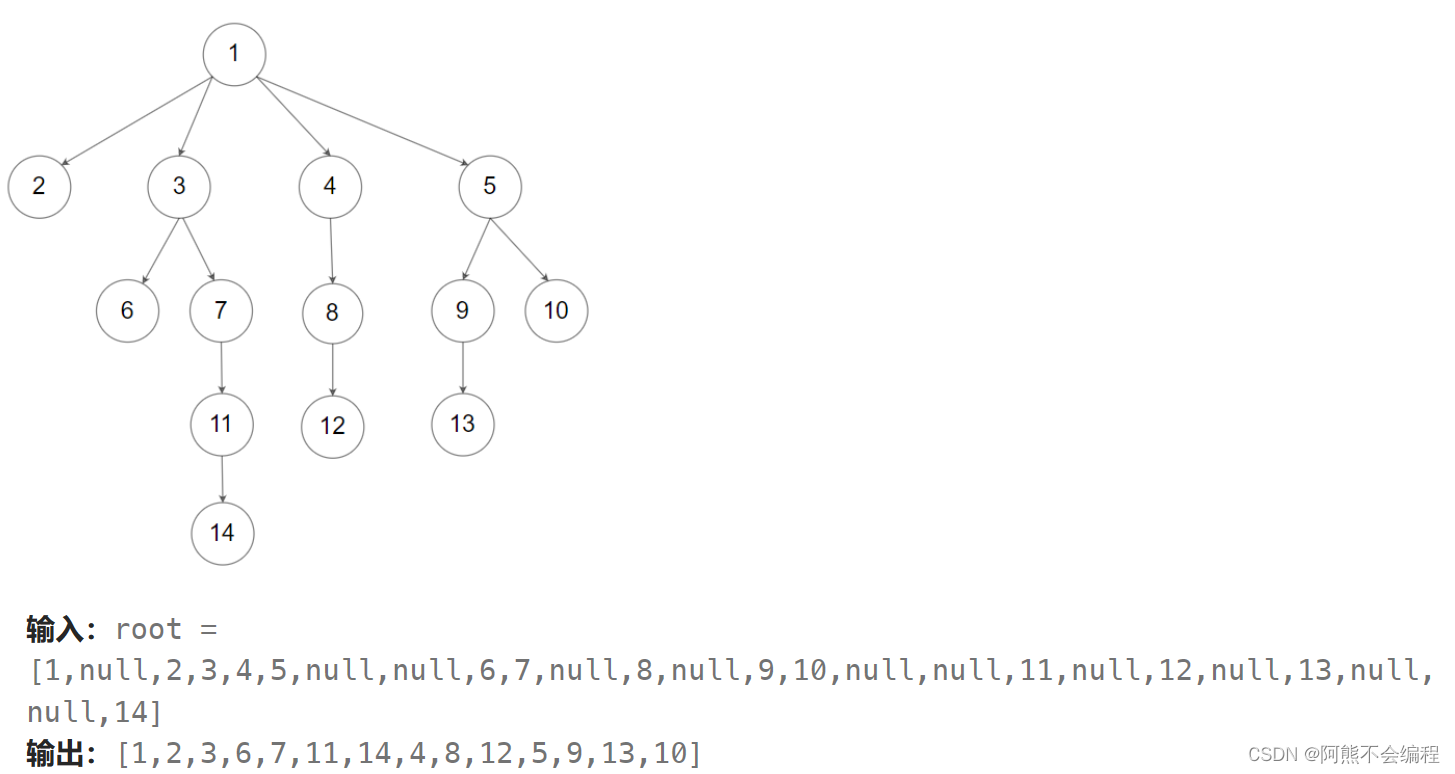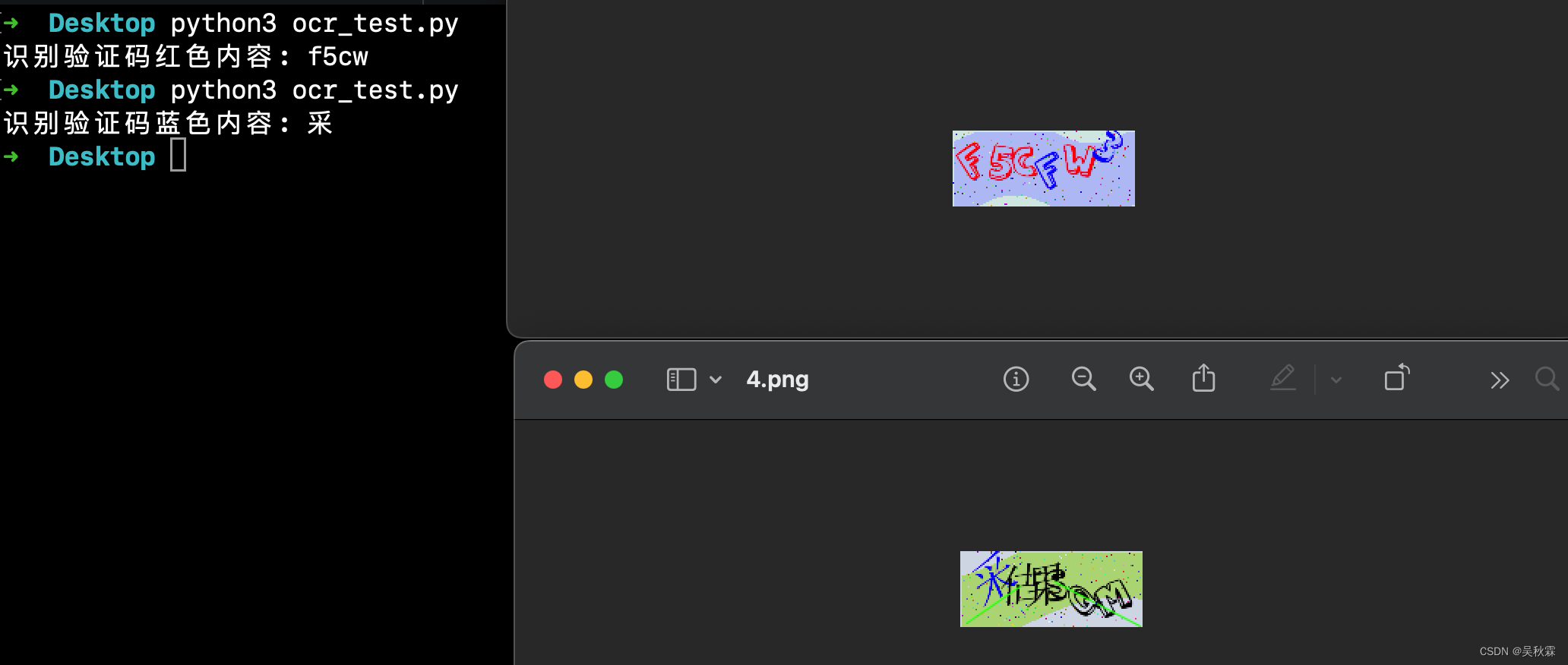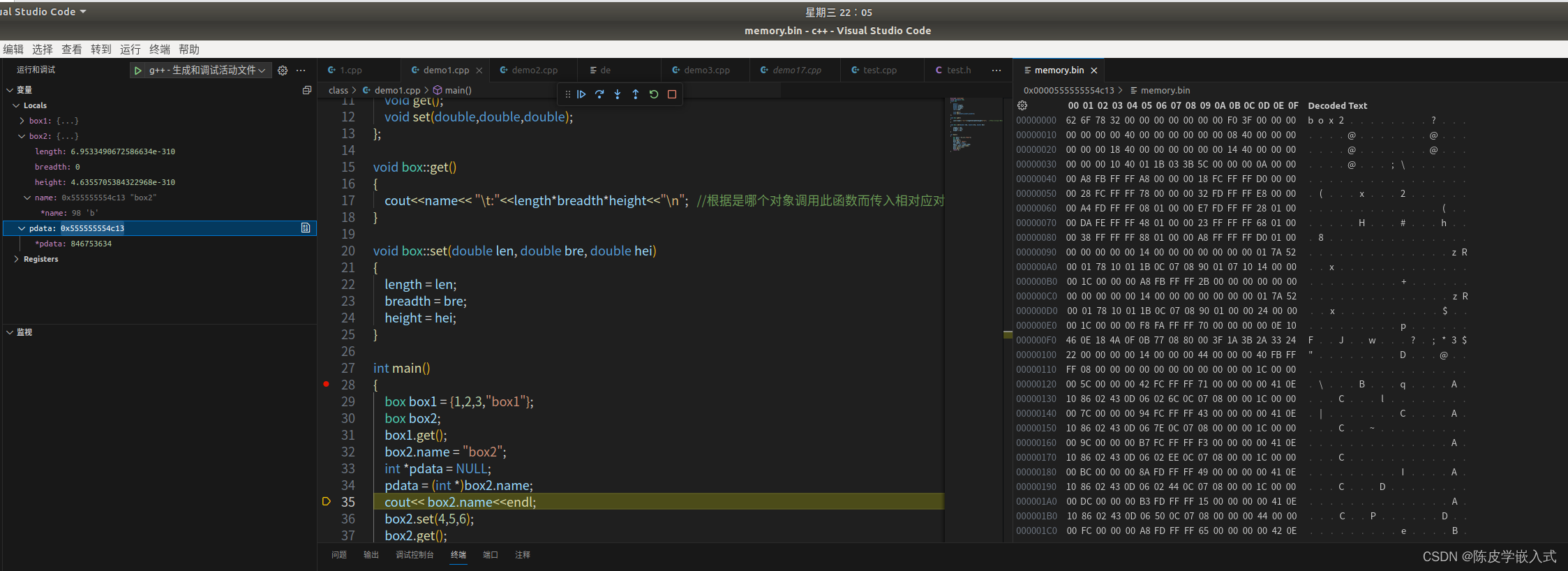STL
- vector 头文件<vector>
- 初始化,定义,定义长度,定义长度并且赋值,从数组中获取数据
- 返回元素个数size()
- 判断是否为空empty()
- 返回第一个元素front()
- 返回最后一个数back()
- 删除最后一个数pop_back()
- 插入push_back(x)
- 清空clear()
- begin()
- end()
- 使用size()遍历
- 使用begin()和end()遍历
- 使用auto遍历
- pair 头文件<utility>
- 初始化,pair<int,int>,make_pair(1,1)
- 第一个元素first,第二个元素second
- 嵌套
- 排序
- list 头文件<list>
- 删除 pop_front() pop_back() erase() remove()
- 插入 insert push_front() push_back()
- 遍历 for(auto &e:list) cout<<e<<" ";
- 排序 sort()
- 转置 reverse()
- 去重 unique()
- queue 头文件<queue>
- 初始化
- 长度size()
- 是否为空empty()
- 队尾插入push()
- 删除队头pop()
- 返回对头front()
- 返回队尾back()
- 清空,初始化
-
stack 头文件<stack>
-
初始化
-
长度size()
-
栈顶插入一个元素push()
-
返回栈顶元素top()
-
弹出栈顶元素pop()
-
string 头文件<string>
- 初始化
- 截取substr(1,5)
- 大小和长度 size() length()
- 头指针 c_str()
- 拼接 +
- 尾插 push_back()
- 插入 insert()
- priority_queue 头文件<queue>
- 初始化,默认大根堆
- 长度size()
- 是否为空empty()
- 队尾插入push()
- 删除队头pop()
- 返回堆顶top()
- 清空,初始化
- deque 头文件<deque>
- 初始化
- 长度size()
- 是否为空empty()
- 返回第一个元素front()
- 返回最后一个数back()
- 删除最后一个数pop_back()
- 插入push_back(x)
- 队首插入一个元素push_front()
- begin()
- end()
- set 头文件<set>
- 初始化
- 返回元素个数size()
- 是否为空empty()
- 清空clear()
- 第几个数begin()
- 最后一个的后一个end()
- 插入insert()
- 查找find()
- 删除erase(x)
- 返回大于等于x的最小的的迭代器lower_bound(x)
- 返回大于x的最小的数的迭代器upper_bound(x)
- map 头文件<map>
- 初始化
- 插入insert()
- 删除erase()
- 查找find()
- 个数count()
- 返回大于等于x的最小的的迭代器lower_bound(x)
- 返回大于x的最小的数的迭代器upper_bound(x)
- unordered
- unordered_set
- unordered_map
- unordered_muliset
- unordered_multimap
- algorithm 头文件<algorithm>
- 排序sort()
- 最值max、min
- 最大公约数__gcd
- 交换swap(a,b)
- 二分查找lower_bound()、upper_bound()
- 倒置reverse()
- 全排列next_permutation()
示例代码
vector
#include<iostream>
#include<vector>
using namespace std;
int main () {
//初始化一个vector,长度为10,值都为1
vector<int> v0(10,1);
//初始化v1,它的值从arr中拿,初始化v2,它的值从v1拿,使用三种遍历遍历出v2
int arr[10] = {1,2,3,4,5,6,7,8,9,10};
vector<int> v1(arr,arr+10);
vector<int> v2(v1.begin(),v1.end());
//第一种
for(int i=0;i<v2.size();i++) cout<<v2[i]<<" ";
cout<<endl;
//第二种
for(auto i=v2.begin();i!=v2.end();i++) cout<<*i<<" ";
cout<<endl;
//第三种
for(auto x:v2) cout<<x<<" ";
cout<<endl;
//返回元素个数size()
cout<<v2.size()<<endl;
//判断是否为空empty()
cout<<v2.empty()<<endl;
//返回第一个元素front()
cout<<v2.front()<<endl;
//返回最后一个数back()
cout<<v2.back()<<endl;
//删除最后一个数pop_back()
v2.pop_back();
//插入push_back(x)
v2.push_back(15);
//清空clear()
v2.clear();
return 0;
}
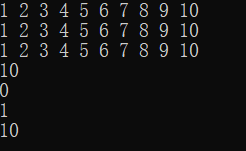
list
#include<bits/stdc++.h>
using namespace std;
int main() {
list<int> list;
//empty() size()
//尾插
for(int i=0;i<10;i++)
list.push_back(i);
//遍历
for(auto &e:list) cout<<e<<" ";
auto p = find(list.begin(),list.end(),5);
//插入 insert push_front() push_back()
list.insert(p,100);
cout<<endl;
for(auto &e:list) cout<<e<<" ";
//删除 pop_front() pop_back() erase() remove()
list.erase(p);
cout<<endl;
for(auto &e:list) cout<<e<<" ";
cout<<endl;
//排序
list.sort();
for(auto &e:list) cout<<e<<" ";
cout<<endl;
//去重 保证有序
list.unique();
for(auto &e:list) cout<<e<<" ";
cout<<endl;
//remove
list.remove(100);
for(auto &e:list) cout<<e<<" ";
cout<<endl;
//转置
list.reverse();
for(auto &e:list) cout<<e<<" ";
cout<<endl;
}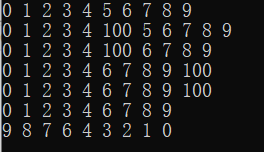
pair
#include<iostream>
#include<vector>
#include<algorithm>
#include<utility>
using namespace std;
//根据first的值升序排序
bool cmp1(pair<int,int> a,pair<int,int> b) {
return a.first < b.first;
}
//根据second的值升序排序
bool cmp2(pair<int, int> a, pair<int, int> b)
{
return a.second < b.second;
}
int main () {
//初始化,pair<int,int>,make_pair(1,1)
pair<int,int> p(1,1);
pair<int,int> q = make_pair(1,1);
//第一个元素first,第二个元素second
cout<<p.first<<endl;
cout<<p.second<<endl;
//嵌套
pair<int,pair<int,int>> k(2,{1,1});
//排序
vector<pair<int, int>>vec;
vec.push_back({ 1,2 });
vec.push_back({ 4,2 });
vec.push_back({ 3,3 });
vec.push_back({ 2,1 });
sort(vec.begin(), vec.end(), cmp1);
cout << "根据first的值升序排序:" << endl;
for (auto it = vec.begin();it != vec.end();it++)
{
cout << "(" << it->first << "," << it->second << ")" << endl;
}
sort(vec.begin(),vec.end(),cmp2);
cout << "根据second的值升序排序:" << endl;
for (auto it = vec.begin();it != vec.end();it++)
{
cout << "(" << it->first << "," << it->second << ")" << endl;
}
return 0;
}
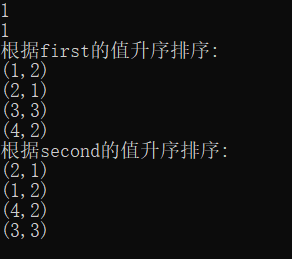
queue
#include<iostream>
#include<queue>
using namespace std;
int main () {
//初始化
queue<int> q;
//队尾插入push()
q.push(1);
q.push(2);
q.push(3);
//长度size()
cout<<q.size()<<endl;
//是否为空empty()
cout<<q.empty()<<endl;
//删除队头pop()
q.pop();
//返回对头front()
cout<<q.front()<<endl;
//返回队尾back()
cout<<q.back()<<endl;
//清空,初始化
q = queue<int>();
return 0;
}

#include<iostream>
#include<stack>
using namespace std;
int main () {
//初始化
stack<int> s;
//栈顶插入一个元素push()
s.push(1);
s.push(2);
s.push(3);
//长度size()
cout<<s.size()<<endl;
//返回栈顶元素top()
cout<<s.top()<<endl;
//弹出栈顶元素pop()
s.pop();
cout<<s.top();
return 0;
}

string
#include<iostream>
#include<string>
using namespace std;
int main () {
//初始化
string s = "abcdefg";
//截取
string st = s.substr(1,5);
cout<<st;
//大小和长度
cout<<s.size()<<endl;
cout<<s.length()<<endl;
//头指针
printf("%s",s.c_str());
//拼接
st = st + "111";
cout<<st<<endl;
//尾插
s.push_back('h');
cout<<s<<endl;
//插入
s.insert(0,st,0,2);
cout<<s<<endl;
return 0;
}
priority_queue
#include<iostream>
#include<queue>
using namespace std;
int main () {
//初始化,默认大根堆
priority_queue<int> pq;
//队尾插入push()
pq.push(1);
pq.push(2);
pq.push(3);
//长度size()
cout<<pq.size()<<endl;
//是否为空empty()
cout<<pq.empty()<<endl;
//返回堆顶top()
cout<<pq.top()<<endl;
//删除队头pop()
pq.pop();
cout<<pq.top();
//清空,初始化
pq = priority_queue<int>();
return 0;
}

deque
#include<iostream>
#include<deque>
using namespace std;
int main () {
//初始化
deque<int> d;
//队尾插入push_back(x)
d.push_back(1);
d.push_back(2);
d.push_back(3);
//长度size()
cout<<d.size()<<endl;
//是否为空empty()
cout<<d.empty()<<endl;
//返回第一个元素front()
cout<<d.front()<<endl;
//返回最后一个数back();
cout<<d.back();
//队首插入一个元素push_front()
d.push_front(5);
//删除最后一个数pop_back()
d.pop_back();
return 0;
}

set
#include<iostream>
#include<set>
using namespace std;
int main () {
//初始化
set<int> s;
//插入insert()
s.insert(1);
s.insert(2);
s.insert(3);
s.insert(4);
s.insert(5);
s.insert(6);
//返回元素个数size()
cout<<s.size()<<endl;
//是否为空empty()
cout<<s.empty()<<endl;
//查找find()
set<int>::iterator it = s.find(3);
if(it==s.end()) cout<<false<<endl;
else cout<<true<<endl;
//删除erase(x)
s.erase(2);
//返回大于等于x的最小的的迭代器lower_bound(x)
cout<<*s.lower_bound(3)<<endl;
//返回大于x的最小的数的迭代器upper_bound(x)
cout<<*s.upper_bound(3)<<endl;
//清空clear()
s.clear();
return 0;
}

map
#include<iostream>
#include<map>
using namespace std;
int main () {
//初始化
map<int,int> m;
//插入insert()
//m[1] = 1;
m.insert(make_pair(1,1));
m.insert(make_pair(2,2));
m.insert(make_pair(3,3));
m.insert(make_pair(4,4));
m.insert(make_pair(5,5));
//删除erase()
map<int,int>::iterator it = m.find(5);
m.erase(it);
//查找find()
it = m.find(5);
if(it==m.end()) cout<<false<<endl;
else cout<<true<<endl;
//返回大于等于x的最小的的迭代器lower_bound(x)
it = m.lower_bound(3);
cout<<it->second<<endl;
//返回大于x的最小的数的迭代器upper_bound(x)
it = m.upper_bound(3);
cout<<it->second<<endl;
return 0;
}

unordered_set
#include<iostream>
#include<unordered_set>
using namespace std;
int main () {
//初始化
unordered_set<int> us;
//插入insert()
us.insert(1);
us.insert(2);
us.insert(3);
//删除erase()
us.erase(3);
//查找find()
unordered_set<int>::iterator it;
it = us.find(3);
if(it==us.end()) cout<<false<<endl;
else cout<<true<<endl;
//插入insert()
us.insert(3);
it = us.find(3);
if(it==us.end()) cout<<false<<endl;
else cout<<true<<endl;
return 0;
}

algorithm
#include<iostream>
#include<algorithm>
using namespace std;
bool cmp(int a,int b) {
return a>b;
}
int main () {
//排序
int arr[] = {1,3,2,5,4,9,7};
int length = sizeof(arr)/sizeof(int);
sort(arr,arr+length,cmp);
for(int i=0;i<length;i++) {
cout<<arr[i]<<" ";
}
cout<<endl;
//最值
cout<<max(1,3)<<endl;
//最大公约数
cout<<__gcd(20,30)<<endl;
//交换
int a = 1;
int b = 2;
swap(a,b);
cout<<a<<endl;
//二分查找
int ar[] = {0, 1, 3, 5, 8, 10, 16};
cout<<*lower_bound(ar, ar + 7, 3)<<endl;
cout<<lower_bound(ar, ar + 7, 3)-ar<<endl;
//倒置
reverse(arr, arr + sizeof(arr) / sizeof(int));
for(int i=0;i<length;i++) {
cout<<arr[i]<<" ";
}
cout<<endl;
//全排列
int c[] = {1, 2, 3};
do{
cout << c[0] << " " << c[1] << " " << c[2] << endl;
} while (next_permutation(c, c+3));
return 0;
}



